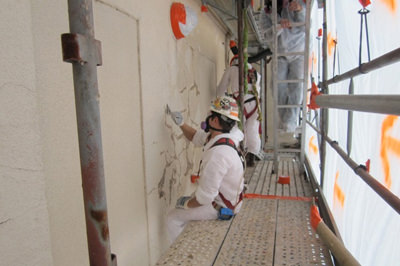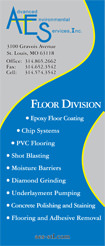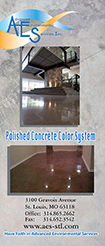Asbestos Removal FAQs

When you relocate your business to an industrial building or move into your dream home, asbestos removal may not be the most important thing on your mind. But before you start living/working there, or begin renovating the place, it is important to make sure that no one is exposed to asbestos fibers lurking in the air. Asbestos is a recognized carcinogen that can cause different types of cancers and chronic respiratory problems. Many residential, commercial, and public buildings built before the 1980s in the United States contain asbestos. It is not uncommon for the asbestos from attic insulation in older homes to fall through the ceiling cracks.
There are multiple ways to deal with asbestos-containing materials (ACM). Our asbestos removal experts know more than a thing or two about securing residential, commercial, and industrial buildings against asbestos exposure prior to renovating it, razing it to the ground, or occupying it. If you believe that your building needs to be inspected and rid of asbestos, read on to get answers to some of the most common questions we receive. You can also contact us in St. Louis to learn more about our asbestos abatement services and get started on your project.
Important Asbestos Removal Questions Answered

As experts in asbestos testing and removal, businesses and homeowners commonly pose a variety of questions to us on avoiding exposure to asbestos in their premises. Our most common questions include the following.
How can I come in contact with asbestos?
First off, there are potentially many places within your property where asbestos may be found. These areas include exterior walls, window putty, shingles, roofing felts, floor coverings, insulation, interior walls, ceilings, and electrical equipment. Materials containing asbestos are hazardous only if they are crumbling or in a state of disrepair. This is because they may give off asbestos fibers when they break or are disturbed during repair and remodeling. The most common way for asbestos to enter the body is through breathing. You, the contractor, and/or repairmen may inhale the asbestos fibers during the renovation.
What does asbestos removal do?
It does exactly as it sounds - removes asbestos from materials and components in your building. The main advantage of professional asbestos removal is that when it is done properly, you don't have to worry about asbestos in your building again. On the other hand, the process is typically quite time-consuming and can be costly depending on measures required. While abatement is not the only solution to avoid exposure to asbestos, it is often the best choice for ensuring a safe, hazard free environment, especially in commercial settings.
How long does asbestos removal take?
The time required for asbestos removal depends on the size of the contaminated area as well as the type and amount of asbestos present. For smaller projects, you may not need to vacate your premises at all. We use industrial plastic sheets to seal off the contaminated area from your work area, and will ensure your safety throughout our entire project.
Is there an alternative to asbestos removal?
Yes, you can opt for asbestos encapsulation instead. The process is less time-consuming than asbestos abatement. It involves covering the asbestos with a protective coating, and is especially suitable for repairing damaged or exposed asbestos edges. However, asbestos will remain and may pose a problem in the future as the material ages and degrades.
How do I know that asbestos is no longer a problem?
After the professional asbestos removal process, the air in and around your building is tested for asbestos fibers. Air quality is deemed safe if it meets the permissible exposure limit (PEL) of 0.1 fiber per cubic centimeter, set by the Occupational Safety and Health Administration (OSHA).
Remove Asbestos & Enjoy Peace of Mind
Depending on the extent of work required, asbestos removal may be quite expensive. Yet, as it is a matter of your long-term health, we suggest that you do not postpone inspection and abatement. You should also avoid attempting the job yourself as it will most certainly put you in harm's way. Asbestos abatement specialists use protective equipment and specialized tools that prevent exposure. The asbestos must also be handled and disposed of in a safe and environmentally-friendly manner. It involves a great deal of practical training and experience.
Trust Advanced Environmental Services with Your Asbestos Removal in St. Louis, St. Charles, and Columbia, MO
At Advanced Environmental Services, our experts follow safety guidelines and use the best equipment when removing asbestos from your property. We will ensure all regulations are followed, delivering safe and reliable asbestos abatement services. Contact us online or by phone to request a quote or learn more about our asbestos abatement service today.



